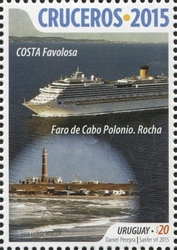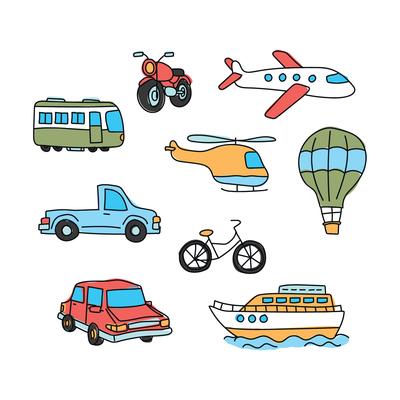Stamp: Costa Favolosa (Uruguay 2015)
Costa Favolosa (Uruguay 2015)
04 December (Uruguay ) within release Cruises Series 2015 goes into circulation Stamp Costa Favolosa face value 20 Uruguayan peso
| Stamp Costa Favolosa in catalogues | |
|---|---|
| WADP Numbering System - WNS: | WAD:UY062.15 |
Stamp is vertical format.
Also in the issue Cruises Series 2015:
- Stamp - Costa Favolosa face value 20;
- Stamp - Norwegian Sun face value 20;
- Stamp - MS Zaandam face value 20;
- Stamp - MSC Splendida face value 20;
- Mini Sheet - Cruises Series 2015 face value ;
|
Data entry completed
80%
|
|
|---|---|
| Stamp Costa Favolosa in digits | |
| Country: | Uruguay |
| Date: | 2015-12-04 |
| Size: | 35 x 50 |
| Perforation: | 12 by 12 |
| Format: | Stamp |
| Face Value: | 20 Uruguayan peso |
Stamp Costa Favolosa it reflects the thematic directions:
Tourism is travel for pleasure or business; also the theory and practice of touring, the business of attracting, accommodating, and entertaining tourists, and the business of operating tours. Tourism may be international, or within the traveller's country. The World Tourism Organization defines tourism more generally, in terms which go "beyond the common perception of tourism as being limited to holiday activity only", as people "traveling to and staying in places outside their usual environment for not more than one consecutive year for leisure, business and other purposes". Tourism can be domestic or international, and international tourism has both incoming and outgoing implications on a country's balance of payments. Today, tourism is a major source of income for many countries, and affects the economy of both the source and host countries, in some cases being of vital importance.
Places of natural beauty such as beaches, tropical island resorts, national parks, mountains, deserts and forests, are examples of traditional tourist attractions which people may visit. Cultural tourist attractions can include historical places, sites of significant historic event, monuments, ancient temples, zoos, aquaria, museums and art galleries, botanical gardens, buildings and structures (such as forts, castles, libraries, former prisons, skyscrapers, bridges), theme parks and carnivals, living history museums, public art (sculptures, statues, murals), ethnic enclave communities, historic trains and cultural events. Factory tours, industrial heritage, creative art and crafts workshops are the object of cultural niches like industrial tourism and creative tourism. Many tourist attractions are also landmarks. But sports events such as a soccer game, Formula 1 race or sailing regatta can also attract tourists.
A ship is a large watercraft that travels the world's oceans and other sufficiently deep waterways, carrying passengers or goods, or in support of specialized missions, such as defense, research and fishing. Historically, a "ship" was a sailing vessel with at least three square-rigged masts and a full bowsprit. Ships are generally distinguished from boats, based on size, shape and load capacity.
Transport (in British English) or transportation (in American English) is the intentional movement of humans, animals, and goods from one location to another. Modes of transport include air, land (rail and road), water, cable, pipelines, and space. The field can be divided into infrastructure, vehicles, and operations. Transport enables human trade, which is essential for the development of civilizations.



